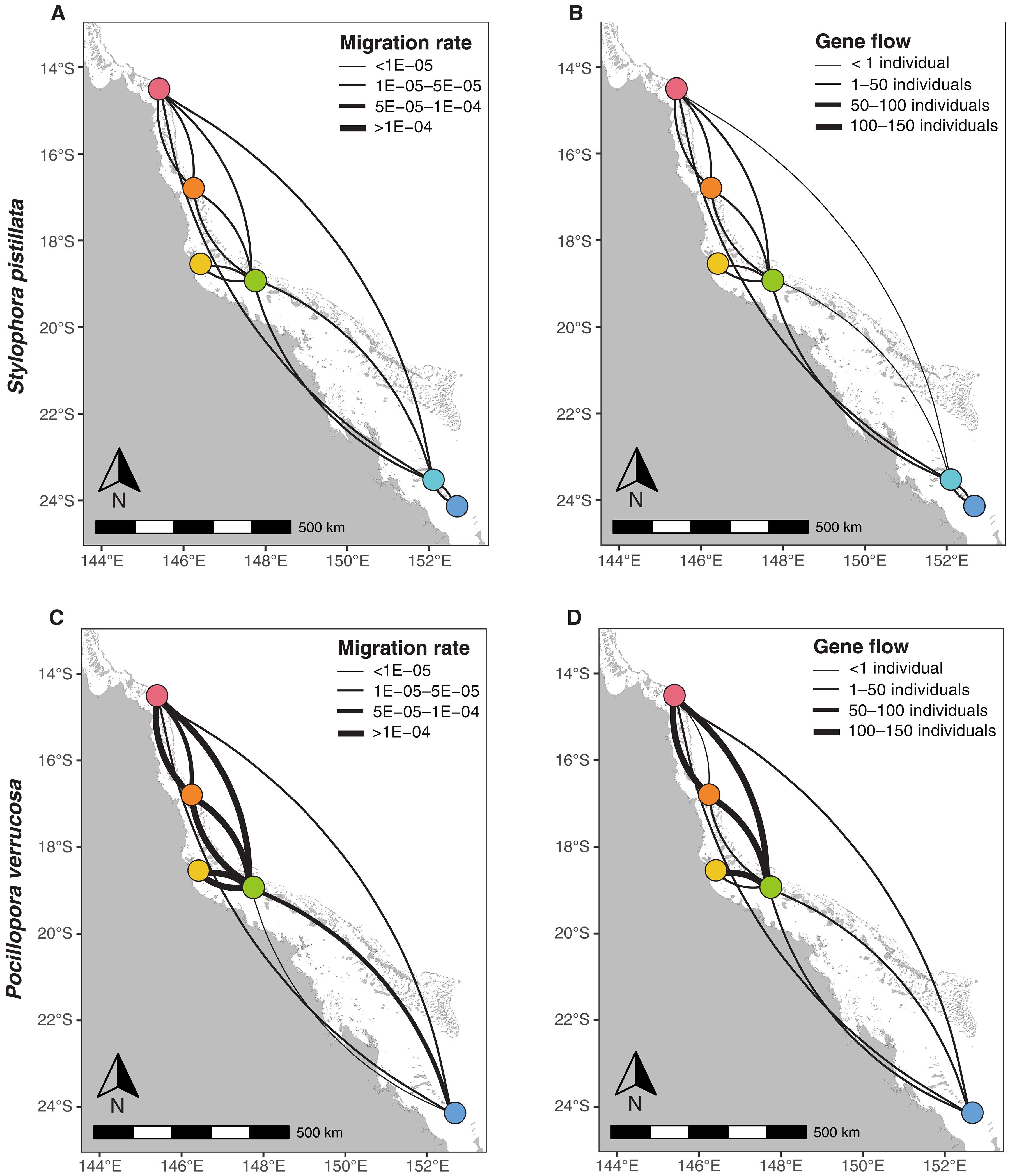Connectivity differs by orders of magnitude among co-distributed corals, affecting spatial scales of eco-evolutionary processes
IF 12.5
1区 综合性期刊
Q1 MULTIDISCIPLINARY SCIENCES
引用次数: 0
Abstract
Reef building corals are declining worldwide, yet the processes driving population connectivity remain poorly understood. Using complementary analyses, we provide quantitative estimates of ecologically relevant dispersal and evolutionarily important gene flow in co-distributed coral species on the Great Barrier Reef. We find dispersal distances across meters (23 to 102 meters) in the brooding Stylophora pistillata and across kilometers (21 to 52 kilometers) in the broadcast spawning Pocillopora verrucosa, consistent with expectations based on their reproductive modes. Similarly, while gene flow rates averaged over the past ~400,000 generations are very low among S. pistillata populations, P. verrucosa populations are well connected. As a result, estimates of genetic diversity across multiple metrics and population sizes are smaller in S. pistillata compared to P. verrucosa. These results highlight the importance of spatial scales and reproductive modes in predicting coral adaptive responses and underscore the value of considering spatial connections between target populations in conservation and restoration.

在共分布的珊瑚中,连通性存在数量级差异,影响着生态进化过程的空间尺度
在世界范围内,造礁珊瑚正在减少,但人们对推动种群连通性的过程仍然知之甚少。利用互补分析,我们对大堡礁共分布珊瑚物种的生态相关扩散和进化上重要的基因流进行了定量估计。我们发现,在育雏的柱头藻(Stylophora pistilllata)中,几米(23 ~ 102米)的传播距离和在播种期的疣孔藻(Pocillopora verrucosa)中,几公里(21 ~ 52公里)的传播距离与基于它们繁殖模式的预期一致。同样,尽管过去40万代的平均基因流率在雌蕊草种群中非常低,但疣状假凤梨种群之间的联系却很紧密。因此,雌蕊花的遗传多样性在多个指标和种群规模上的估计值要小于疣状棘豆。这些结果强调了空间尺度和生殖模式在预测珊瑚适应性反应中的重要性,并强调了在保护和恢复中考虑目标种群之间的空间联系的价值。
本文章由计算机程序翻译,如有差异,请以英文原文为准。
求助全文
约1分钟内获得全文
求助全文
来源期刊

Science Advances
综合性期刊-综合性期刊
CiteScore
21.40
自引率
1.50%
发文量
1937
审稿时长
29 weeks
期刊介绍:
Science Advances, an open-access journal by AAAS, publishes impactful research in diverse scientific areas. It aims for fair, fast, and expert peer review, providing freely accessible research to readers. Led by distinguished scientists, the journal supports AAAS's mission by extending Science magazine's capacity to identify and promote significant advances. Evolving digital publishing technologies play a crucial role in advancing AAAS's global mission for science communication and benefitting humankind.
 求助内容:
求助内容: 应助结果提醒方式:
应助结果提醒方式:


